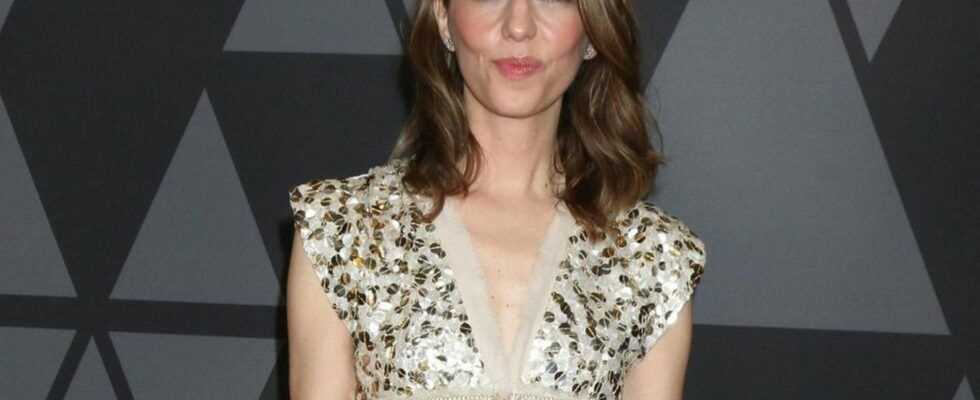Sofia Coppola
Curse and blessing of their world-famous surname
Sofia Coppola made her screen debut as a baby in “The Godfather”.
© Carrie-nelson / Imagecollect.com
In the shadow of her father, Sofia Coppola had to fight hard for her success. Or did it just fall to her thanks to her surname?
A family name that is as unusual as it is famous opens many doors, but it can also be a burden. Who knows better than the Coppolas? To a certain Nicolas Kim Coppola, for example, he appeared oversized. In order to, in the truest sense of the word, make his own name in Hollywood, he looked for a pseudonym – and wrote film history himself as Nicolas Cage (57). Francis Ford Coppola’s (82) daughter Sofia (Cage’s cousin), on the other hand, who turns 50 on May 14, stayed true to her last name. A decision that should have helped her as well as harmed her.
A star infant
Who can claim to have landed a role in a masterpiece of film history at the age of ten weeks? In the infamous church scene at the end of “The Godfather”, it is little Sofia who is baptized Michael Francis Rizzi in front of the camera. It was her first of many small appearances in her father’s films, and she also had a mini-part in “The Godfather 2”. The reason why people still harbored a grudge against them decades later came about in 1990 …
Because in “The Godfather III” she got a leading role in her father’s gangster epic for the first time – she embodies Don Michael Corleone’s (Al Pacino, 81) daughter Mary. Your admittedly performance was for many the final proof of unbearable nepotism in the Coppola house – almost worthy of that of the Corleones. For Sofia Coppola there were devastating reviews and two Golden Raspberries (“Worst Supporting Actress” and “Worst Newcomer”). And afterwards she was also richer by one certainty: she (almost) completely renounced acting.
Your own spurs off and behind the camera
Far away from her influential father and at first just as far away from the film business, she set out to earn her own spurs. In search of her destiny in Japan, she founded her own fashion brand called MilkFed after graduating. But outside of the film business, of all things, she became aware of her love for it. And so she was drawn back.
She made her directorial debut with the 1999 film adaptation of the novel “The Virgin Suicides”. Even more than this debut, however, her family ties caused a stir again in the same year – and impressively suggests the irrational aversion she is still confronted with at times.
Yes, once again it was an advantage for her back then to be a Coppola. Because her father is good friends with a certain George Lucas (76) and he brought out a film called “Star Wars: Episode I – The Phantom Menace” in 1999. Sofia Coppola not only found herself as an onlooker on the set of the film, but immediately got a cameo in it, which only a few well-timed still images can attest to – she is one of Padmé Amidala’s (Natalie Portman, 39) doppelgangers.
Nevertheless, the decision-makers of the “Razzies” took this mini-appearance as an opportunity to nominate her again in 2000 for a Golden Raspberry in the category “Worst Supporting Actress”. Even a decade later, the “Godfather III” sting was apparently still too deep …
Finally the golden boy instead of the golden raspberry
Her time as a foreigner in a culture as foreign as the Japanese was to inspire her in 2003 to make her most famous film to date. In the Japanese-based film “Lost in Translation”, the characters of Scarlett Johansson (36) and Bill Murray (70) experience that sense of linguistic isolation that Coppola was so familiar with during their time there. For the first time, thanks to the film, her name was independent of her father’s and knew how to convince viewers and critics alike. For the drama she received the Oscar for “Best Screenplay” and was nominated as the first American woman ever for “Best Director”.
Whether you like Sofia Coppola and her art or not, one thing cannot be denied to both of them: they have their very own style. Thanks to their fashion past – as is the case with designer and filmmaker Tom Ford – their films stand for stylish, clear imagery. This can also be seen again in her latest film “On the Rocks”, in which she worked again with Bill Murray 17 years after “Lost in Translation”. Fans call their films, which are always heavy on dialogue, calm, melancholic, decelerated. Critics call them dull and sluggish. Like her surname, her work also polarizes – how fitting.
